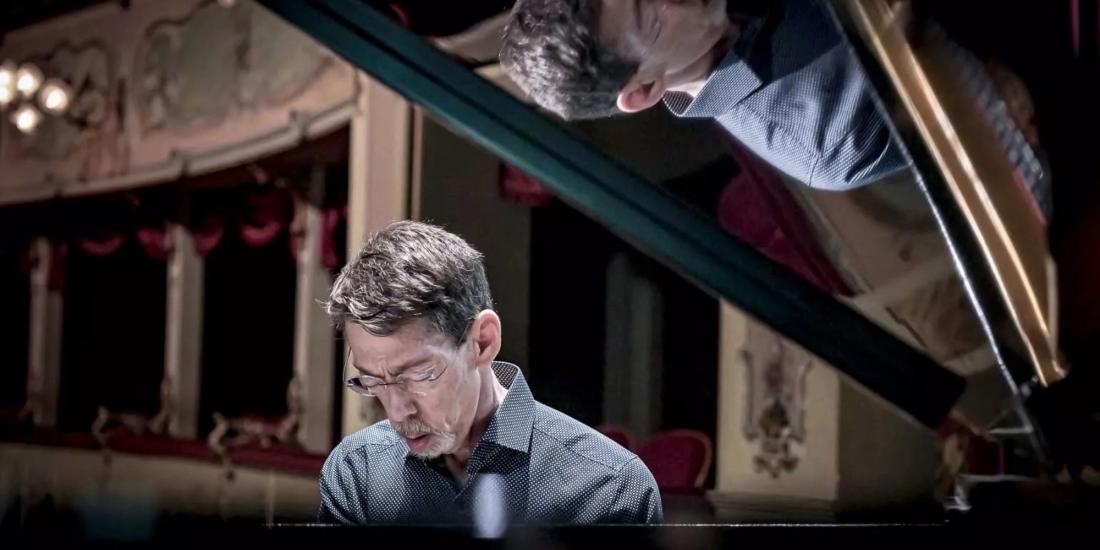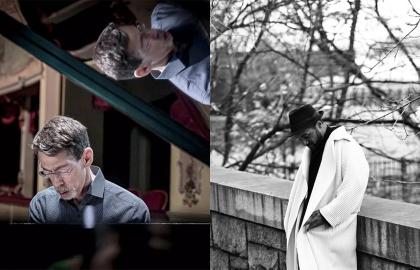A slow start with Art Pepper
In the mid-1970s, Fred Hersch (°1955) was a student with buckets of talent and curiosity to match. He went out one night to see Art Pepper perform at a jazz club, on what turned out to be a memorable evening. For a start, Pepper’s pianist got into a fight and was kicked out of the club. When Pepper asked if there was another pianist in the building, Hersch saw his chance and ended up playing with them for five evenings. It wasn’t a particularly pleasant experience, though: “Pepper forgot several times which song he was playing, and then he’d shout at me.” It didn’t lead to the big breakthrough Hersch had hoped for, but the ball started rolling when he moved to New York in 1977.
His favourite formation is a duo
Toots Thielemans, Jane Ira Bloom, Bill Frisell, Julian Lage, Esperanza Spalding... these are just a few of the major artists that Fred Hersch has formed a duo with. As fantastic as his solo, trio and quintet work is, his greatest pleasure is working with one other musician. He told JazzTimes how his love affair with duo playing began in his student days: “I would be practicing in the piano room, and people would walk by and I’d say ‘Come on in, let’s play a duo!’ It could be another piano player, or a sax player, a vocalist, whoever.” That showed Hersch the possibilities of ‘only’ two musicians playing together. “I can behave as counterpoint for the duo partner. I can behave as a big band or orchestra. I can use the entire width and breadth of the piano. Or I can just comp. I get to play solos...”
Sullivan Fortner is his protégé
No wonder he is bringing in a second musician for his birthday tour: Sullivan Fortner, who was our guest at Bozar just recently, in March 2025. As a student, Fortner took private lessons from Hersch, who had previously taken Brad Mehldau and Aaron Diehl under his wing. Hersch has no doubts about Fortner’s talent, calling him “one of the best jazz pianists in the world today.” He also produced Fortner’s album Solo Game. The student recalls: “I called him and gave him a list of like 400 songs, he picked 30 of them, and the session was basically him calling songs from the control room. I’d play whatever he called, and we did everything in one take. We narrowed it down to nine tunes, got it mastered, and that was it.”
Hersch is one of those contemporary jazz pianists who always simply thrills you with everything he plays.
Things were touch and go for a while
Hersch came out as a gay man in the 1990s, and he is an inspiring fundraiser for Aids campaigns. Some of the profits from his albums go to charity, and benefit concerts rake in considerable amounts. He is HIV positive, and the virus nearly got the better of him in 2008, when Hersch spent two months in a coma. Things were touch and go for a while, and he had to learn to play the piano again afterwards. In his autobiography Good Things Happen Slowly, he admits that every time he makes an album, he wonders if it is going to be his last.
He prefers playing live to working in the studio
Hersch’s latest album, The Surrounding Green, with Drew Grass on bass and Joey Baron on the drums, is one of the few studio albums he has released in the last couple of decades. Appearing live on stage, with or without recording equipment at hand, is more his style. “Everything I do is live now. I don’t play well in the studio. I don’t like headphones; I feel self-conscious; I never feel like I can just be free and let it all rip.” But you’d never guess that from the enthusiastic responses to the album.

